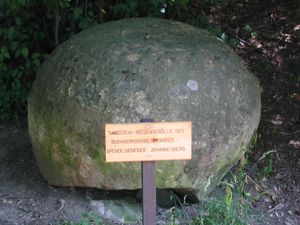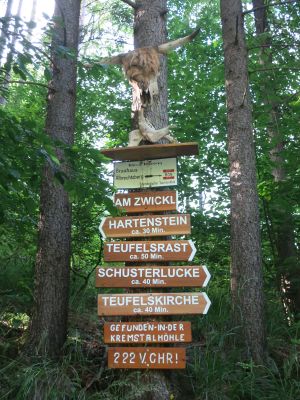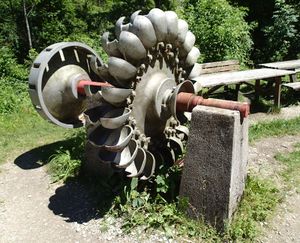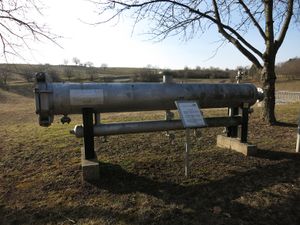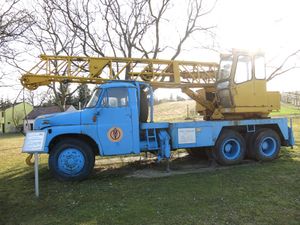Talk:Key:exhibit
Status and Issues
This page has various issues:
- It was created with a defacto status, although it isn't defacto. See thread with subject "[Tagging] inuse, defacto" in Apr 2015 on the Tagging mailing list. Marc Gemis explained one criterion: »So in case there are only 600 items in the whole world of that "thing", it is de-facto. If there are e.g. 1.000.000 such "things", it's more "inuse" than "de-facto"« Obviously, the latter case is true here. Tobias Knerr wrote: »If there is an alternative tagging concept around, then the numbers need to be a lot higher.« Well, there are alternative concepts around. The topmost tag value (43.08% of all instances) is "artwork", and tourism=artwork is an approved tag with 125986 instances, which is 450 times more than exhibit=artwork. No matter which criteria you use, exhibit=* cannot be considered a de-facto standard.
- Discussion entries ("other ideas for tags", "differentiation") don't belong on the main page. They should be moved over here to the discussion page (and be discussed, obviously).
- The key definition and the tag definitions have been made up by one single user. They certainly do not reflect the actual usage of the tags.
- The key may be a good idea, but the tag values and the definitions should be properly worked out by discussion, preferably through a proper proposal process.
--Fkv (talk) 19:56, 30 December 2019 (UTC)
These are good points, especially to move discussion of additional values to the Discussion page. I have used this tag a lot because most of my mapping/tagging is of indoor spaces, and tourism=artwork says that exhibits and artworks exhibited in museums and galleries should *not* be tagged with it, but rather exhibit=artwork. Artworks, sculptures, and informational exhibits are present in a variety of publicly-accessible buildings, and are frequently useful landmarks. It would make sense to me to have "exhibit" be a value of indoor=*, with exhibit=artwork or whatever. --jrose_aph (talk) 15:16, 30 December 2019 (ET)
- The restriction that artworks exhibited in museums and galleries should not be tagged with tourism=artwork is nonsense. I would even call it wiki vandalism. The proposal that was approved by voting didn't have that restriction, and there is absolutely no reason for that restriction. I do think that artworks in museums should not normally be tagged individually, because there are so many of them. It's like mapping all the individual trees in a forest. But if you map them for whatever reason, you should use the proper tag, which is tourism=artwork. --Fkv (talk) 21:12, 30 December 2019 (UTC)
The tag was used since 2012, and found being useful in a tagging list discussion early 2018; after which people started using it more heavily, and the value was documented. This is a normal tag definition process in OSM, besides formal wiki proposals. Please be careful when using words such as 'nonsense' and 'vandalism'!.
Differentiation sections are very useful in OSM to support mappers in the selection of a particular tag (But please remember the world is not black/white, and you might always find objects which are ambiguous to classify). The opinion that they would not belong on a main page is only your own.
Apparently people were not mapping all exhibits in museums, but some important ones, even if that is against your thinking, they have the right to do so.
Documenting values does belong on the main page as well, and 'history' makes 30% of the tag use.
Apparently the tag is orthogonal to tourism, and is orthogonal to artwork. Your 'single user' statement is wrong, if you check the page history, and the value development in taginfo.
As for 'defacto' vs 'inuse', call it whatever you want, thus you can play any number games you like. --Polarbear w (talk) 00:23, 31 December 2019 (UTC)
- The number of objects tagged with exhibit=history is so ridiculously small that we can even discuss them one by one!
- Way 600441576: A library.
- Louisville and Beaufort: All by 2 collaborators of the American Printing House. One graveyard (yuck!), the rest is indoor mapping.
- Nodes 7118744210,7118744219 and way 581001305: Actually exhibitions (museums), not exhibits.
- Node 5604183824: coal(?) drams (outdoors)
- Node 5604183825: A cellar. Not obvious why this is supposed to be an exhibit.
- Lonate Pozzolo (near Milano): Not sure what these objects alongside a forest path are. Maybe stations of an educational path.
- Node 5848067519: outdoor reconstruction of dinosaurs
- Minsk: aircrafts (outdoors)
- Node 6539667016: Not obvious what this is, but it is outdoors.
- Way 445271195: Google Translate says it's a "fertility site". No matter what, it is a building.
- Let's sum it up: Your description only matches some instances mapped by 2 collaborators of the the American Printing House. That's what you call a de-facto standard. --Fkv (talk) 22:24, 17 January 2020 (UTC)
Other Values
There are many varieties of museums, such as history, science, and children's museums, with a variety of exhibits beyond just artworks, and art exhibits are frequently found in other buildings also. Other ideas for tags include:
- exhibit=history for exhibits about history (contrast with historic=* for exhibits of historic artifacts).
- exhibit=science for exhibits about science at children's museums or science centers.
- exhibit=biographical for exhibits about the life of a specific person.
--Originally posted by jrose_aph (talk), moved here 15:16, 30 December 2019 (ET)
- I can't think of any exhibit about history that isn't either a historic artifact or a tourism=information + information=board + board_type=history. We generally need to distinguish mere boards/plaques from lumps of something with an optional board or plaque that explains what this is. We need some real-world examples and I am going to add a few. --Fkv (talk) 21:20, 30 December 2019 (UTC)
- The wiki page tourism=information describes it as a tag for a Visitor Information Center, which is a building dedicated to providing information to tourists, not a general piece of information for tourists. If the community things signage at history should be tagged tourism=information + information=board, then those wiki pages should be rewritten to reflect that. If you are curious about an example of exhibit=history that does not amount to a historical artifact with an informational sign next to it, look at one of these exhibits, which integrate a variety of historical artifacts, historical reproductions for tactile exploration, and print, braille, and audio signage. https://sites.aph.org/museum/programs/main-gallery/callahan-gallery/21-Mathematics/ https://sites.aph.org/museum/programs/main-gallery/callahan-gallery/27-morrison-heady/
- --Originally posted by jrose_aph (talk), 16 April 2020
- Did you even look at the tourism=information page? The meaning you describe was the original meaning, but it has been extended long ago by the information=* subtag (which was never voted on, but anyway), and the description on the information=* page has been extended accordingly. The original meaning is now preserved in tourism=information + information=office. --Fkv (talk) 19:23, 16 April 2020 (UTC)
- Of course I read these pages. Here's the passage from tourism=* in full: "[W] Information, visitor center or centre, visitor information center or tourist information center is an information source for tourists, travellers and visitors. To additionally describe the kind of information use the tag information=*." The Wikipedia link is to a visitor center that describes it thus: "A visitor center or centre (see American and British English spelling differences), visitor information center, tourist information center, is a physical location that provides tourist information to visitors.". If there was an original meaning that was documented in the wiki, but the meaning was changed and extended on some other page without a proposal, then there is just conflicting information on the wiki. --Originally posted by jrose_aph (talk), 6 May 2020
- Did you even look at the tourism=information page? The meaning you describe was the original meaning, but it has been extended long ago by the information=* subtag (which was never voted on, but anyway), and the description on the information=* page has been extended accordingly. The original meaning is now preserved in tourism=information + information=office. --Fkv (talk) 19:23, 16 April 2020 (UTC)
Descriptions
The taginfo on exhibit=* values shows some low use of individual descriptions of objects, such as 'tractor', 'pump' or 'windmill'. I'd prefer to keep the values on a higher level, while the particular object can be described further with the description=* tag. --Polarbear w (talk) 00:33, 31 December 2019 (UTC)
Standalone/Outdoor exhibits
Whereas mapping of indoor exhibits is often problematic due to there big counts, outdoor exhibits are often landmarks or at least very distinctive in their surroundings. For artworks, we've already got the approved tourism=artwork, but for exhibits that aren't artworks the tagging is less obvious. Some examples:
| This station of a geotrail can be tagged as natural=stone, but an additional tourism=exhibit would specify it even better. A possible subtag would be exhibit=natural. geological=* also comes into mind. | |
| historic=archaeological_site + site_type=megalith + megalith_type=dolmen would be wrong here, because this dolmen was made in the 20th century just for demonstration purposes. tourism=artwork would also be wrong, because it is not meant to be an artwork. So this is probably a case where tourism=exhibit + exhibit=history is adequate. But I'd prefer exhibit=historic or exhibit=historical. | |
| On top of this signpost is a skull of a prehistoric animal found in a nearby cave. The skull cannot be tagged with geological=archaeological_site, because that tag belongs to the site where it was found. tourism=exhibit seems fine + maybe exhibit=natural or exhibit=animal | |
| Only a few metres away from a historic power station, there is this historic turbine beside the hiking trail. tourism=exhibit + exhibit=technical? But the (still undocumented) historic=technical_monument is already in use and apparently means the same. | |
| Similar to the previous example. Can this be called a monument? Isn't a big size an essential characteristic of a monoment? That's not an issue if we tag it as an exhibit instead. | |
| Can a vehicle be a monument? tourism=exhibit + exhibit=technical seems more appropriate. | |
| On the same trail as the two previous examples, but this one is very different. It's not technical. It's just a container full of sulphur. tourism=exhibit + exhibit=?? |
--Fkv (talk) 23:10, 30 December 2019 (UTC)
Main Tag
I wonder why this subtag has got a wiki page while the main tag tourism=exhibit still hasn't? The main tag should be documented first! I've already used it several times, without even thinking about a subtag. --Fkv (talk) 23:14, 30 December 2019 (UTC)
- Apparently there is no need for such 'main tag'! exhibit=* is self-explanatory. tourism=exhibit (currently used 5x) would even be counter-productive, as not every exhibit needs to be touristic. It is even an advantage of exhibit=* that it is tourism-agnostic. --Polarbear w (talk) 00:23, 31 December 2019 (UTC)
- You could also omit highway=track because tracktype=* is self-explanatory, and tourism=artwork because artwork_type=* is self-explanatory, and tourism=information because information=* is self-explanatory, and you could go one step further and omit information=board too because board_type=* is self-explanatory. You see where this is going...
- The tourism=* seems perfectly right to me. I can't think of any exhibit that no tourist would want to see. To be seen is the sole purpose of exhibts, isn't it? At least, exhibits are more connected to tourism than, say, tourism=zoo and tourism=picnic_site, both of which are typically used by locals rather than tourists. --Fkv (talk) 21:07, 17 January 2020 (UTC)
